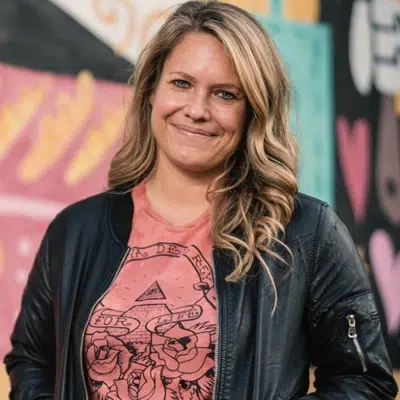At the end of 2021, comedian Grace Mulvey brought smiles to many on Twitter when she reflected on the unexpected rise of a technology that was laughed off by many. “I can’t think of anyone who has had a better year than the QR code. What a comeback.”
While our team at Olo has seen customers testing QR code technology for many years, consumer adoption in the United States has historically lagged behind countries like China, where services like WeChat and AliPay rely heavily on QR codes for payments.
Our journey here has been on a different timeline. This year’s Super Bowl put an exclamation point on the novel resurgence of using a simple mechanism to inform and engage. Coinbase spent $14 million on this year’s most talked about ad, which skipped the massive cinematic production in favor of 30 whole seconds of a QR code bouncing around the screen. The engagement was so successful that it ended up crashing Coinbase’s site.

Restaurant visits in various waves of the pandemic have often included commentary around how QR code menus have transformed the dining experience. While out to dinner recently, a friend remarked how everyone’s heads buried into phones at the start of the meal would have felt rude in another time and place. (She quickly revised her point of view on bring-your-own-device menus when a beautiful high-res image jumped off the screen and settled her decision on what to order better than a paper menu could.)
While I’d agree that there’s no substitute for feeling the physical weight of a world-class wine list or holding up a diner menu like a newspaper on a lazy Sunday morning, there are several use cases in which technology can enhance a restaurant visit.
Consider how audiobook services like Audible have transformed the reading experience when life doesn’t offer the time and space for a leisurely page turn of a book. Noah, our Founder & chief executive, listens to his books on the treadmill (which, sidebar, is wild to me—I need 140 bpm or higher to forget that I’m running when it does happen).
But how do QR codes foster human connection in a restaurant setting? Many people would not inherently associate the two, but a recent experience at a newly opened Bluestone Lane café brought new possibilities to light for me. Ordering dine-in directly to my table through the Bluestone Lane mobile site is easy and speedy, but that’s only where the magic starts.
Instead of the staff members’ time being monopolized by manual order entry and running credit cards, team members at Bluestone Lane are able to offer a more hospitable experience to all guests. The family seated next to me had their preferences stored in their digital profile and were contemplating which breakfast item worked well for their son’s allergy needs.
Our runner, who had the tedious parts of his guests’ visits automated for him, was present at the outdoor seating area and took the family’s needs to heart, offering personal suggestions with a level of service on par with what you’d expect at a Michelin-starred establishment.
From an operations perspective, the flow of the outdoor cafe tables mostly runs itself and servers do not have to navigate the timing for exchange of payment or inadvertently leave guests feeling rushed when they simply need to close a check.
Liam Farrow, the vice president of digital for Bluestone Lane, recently described the transformation as the sales mix shifted from mostly analog to nearly all digital sales: “The mobile experience offers us so much. First and foremost, we can actually identify who customers are now. We can generally identify the repeat and retention of our customers really clearly through the data we are getting. We look back now to when we had a printed menu on the wall—now being able to see beautiful imagery, it entices customers to build their cart out and try a few things that they weren’t going to order before. That in and of itself has been transformational.”
Seeing the magic of technology fading entirely into the background of a restaurant visit means it is incorporated as an enhancement, not a distraction. At Bluestone Lane, this is deliberate and executed with great care and intentionality. The investment pays off with happy guests that build a relationship with the brand through a data layer that builds with each transaction, regardless of how and when they choose to engage.
—Jackie Berg is senior vice president of marketing for Olo.





